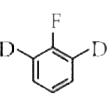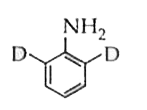S-I: Reaction of but-2-yne by Na/liq NH3 gives trans but-2-ene
S-II: It is syn addition.
S-I&II are correct, S-II is correct explanaion of S-I
S-I&II are correct, S-II is not correct explanation of S-I
S-I is true, but S-II is false
S-I is false, but S-II is true.
The correct Answer is:C
Step by step video, text & image solution for S-I: Reaction of but-2-yne by Na/liq NH_(3) gives trans but-2-ene S-II: It is syn addition. by Chemistry experts to help you in doubts & scoring excellent marks in Class 11 exams.
Updated on:21/07/2023Topper's Solved these Questions
- ALKYNESBOOK - NARAYNACHAPTER - ALKYNESEXERCISE - Level-1 (H.W)
13 Videos
- ALKYNESBOOK - NARAYNACHAPTER - ALKYNESEXERCISE - Level-2 (H.W)
8 Videos
- ALKYNESBOOK - NARAYNACHAPTER - ALKYNESEXERCISE - Level-3
27 Videos
- ALKENESBOOK - NARAYNACHAPTER - ALKENESEXERCISE - Additional Straight O Q
8 Videos
- ATOMIC STRUCTUREBOOK - NARAYNACHAPTER - ATOMIC STRUCTUREEXERCISE - All Questions
685 Videos
Similar Questions
Knowledge Check
Statement-1:Reduction of But-2-yne of Na/liq. NH5 gives trans-But-2-ene.
Statement-2: It is an example of 'anti' addition.AStatement-1 is True, Statement-2 is True, Statement-2 is a correct explanation for Statement-1BStatement-1 is True, Statement-2 is True, Statement-2 is NOT a correct explanation for Statement-1CStatement-1 is True, Statement-2 is False.DStatement-1 is False, Statement-2 is True.Treatment of
 with NaNH2/liq.NH3 gives A
with NaNH2/liq.NH3 gives A B
B C
C D
D
A: When butyne-2 is reacted with Na/liq. NH3 then trans-butene-2 is formed.
R : This reaction proceeds through free radical intermediate.AIf both Assertion & Reason are true and the reason is the correct explanation of the assertion, then mark (1).BIf both Assertion & Reason are true but the reason is not the correct explanation of the assertion, then mark (2)Cif Assertion is true statement but Reason is false, then mark (3)DIf both Assertion and Reason are false statements, then mark (4)
Assertion(A):But-2-yne on treatment with Na/NH3(l) produces trans-2-butene.
Reason: In but-yne all the atoms are linear.
View SolutionAssertion. But-2-yne on reduction with Na/NH3(l) gives trans-2-butene
Reason. To minimise interelectronic repulsions, the addition of electrons occurs on the opposite faces of the triple bond.
View SolutionThe addition of Br2 to ( E)-but-2-ene gives
View SolutionThe addition of Br2 to ( E)-but-2-ene gives
View SolutionBut-2-yne is reduced to trans-but-2-ene using
View Solution
